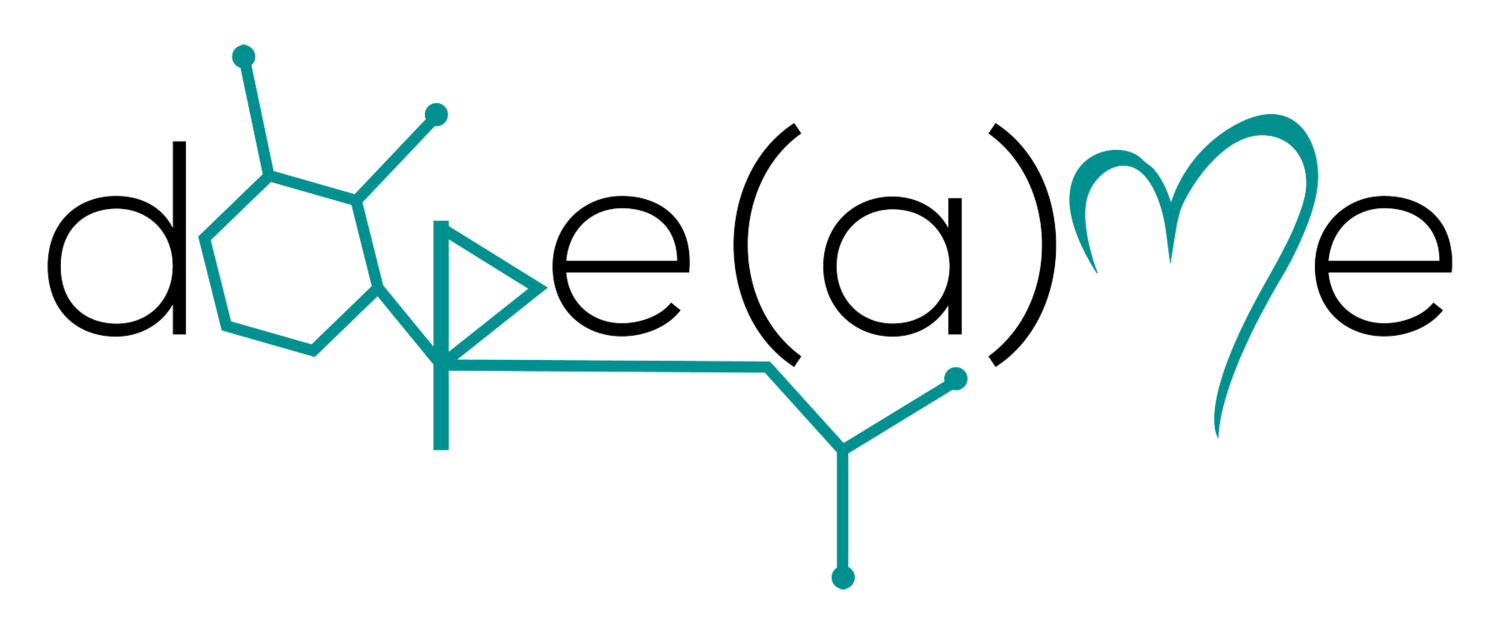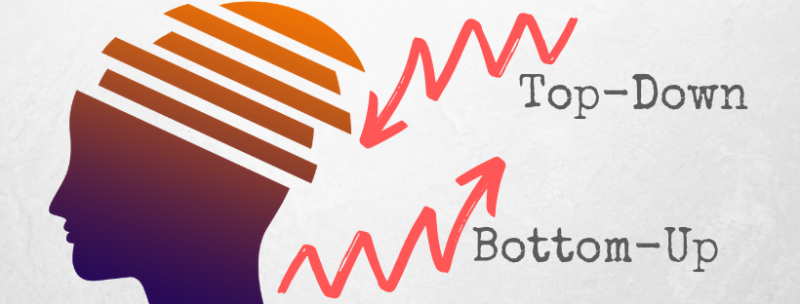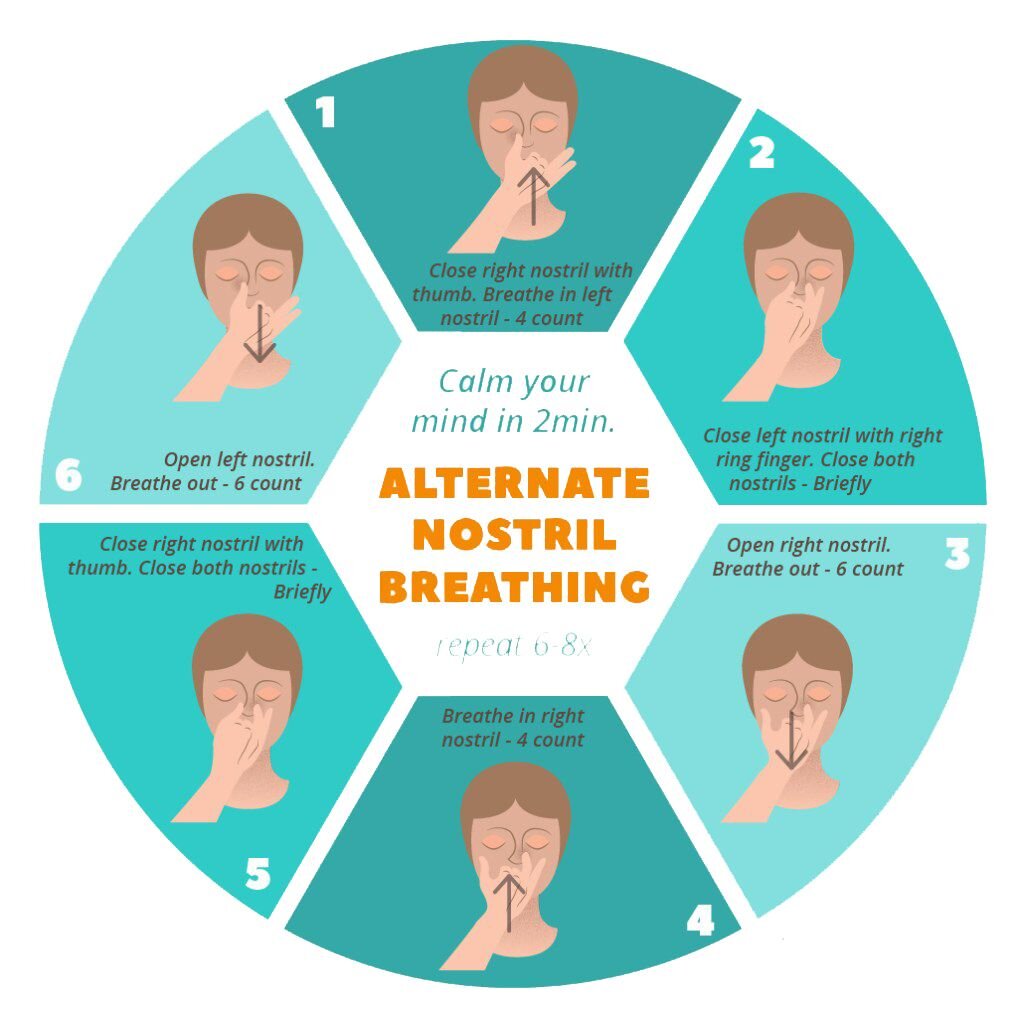How you breathe is both a window into your current nervous system state as well as influencing what state you are in. This is referred to as bottom-up and top-down processing. The rhythm of your breath naturally changes based on your brainstem’s moment to moment assessment of your metabolic needs and nervous system state, triggered by the changing levels of carbon dioxide present in your blood (i.e. bottom-up) and the internal appraisal of safety and danger inside, outside, and between you and others.
When we are aware of how and why our breath changes and consciously assess whether the change in breathing rate is appropriate, as well as determine what state is needed or wanted in this moment, we can take control of our breathing and be the conscious driver of our nervous system (i.e. top-down).
Why would we want to do that? Because we have an innate ability to heal, along with the ability to feel and experience a wide range of diverse sensations, emotions, thoughts and behaviours, and many of us are stuck in a small range of activation - which we are not meant to be in for long periods of time without reprieve, restoration and recovery. Another adage that I strive to live by is “flexibility over consistency,” which is alluding to the key of optimal health and well-being as diversity and movement through our various states, rather than, again, being stuck in a small range of activation.
Immune Health and Breathing
Our immune strength is intricately connected to how we breathe. So much so that we can also say that lung capacity and respiratory diaphragm rhythm and pliability are the greatest indicators of life span. It’s important in this modern world for us all to balance the need to listen to social and cultural expectations for the collective health while still maintaining and honoring our ability to care for our own health and well-being from a place of resilience and self empowerment. There is a heightened sense of responsibility and a decrease in fear when I perceive my health in this way. While there are many tactics to employ to gain skills in your offense, this post will hone in on one simple place to start: nose breathing.
The nasal cycle rhythm refers to the natural change from one nostril dominance to the other (generally at a 3:1 ratio air flow) in intervals of 90 minutes to 2.5 hours, while more or less (along with desynchronization) generally leads to disease, lethargy and depression.
So, what’s the point of this rhythmic change in nostril dominance?
There are a few theories, most of which center around moisture, pathogen clearance, general nose maintenance and differences in modes of processing connected to the left and right brain hemispheres.
The nose is the only organ in the entire body - other than the sexual organs and breasts - that contain erectile tissue. This erectile tissue controls the size, shape and angle of the air passages, thereby regulating air flow through the nasal passages. It is the erectile tissue that automatically alternates air flow between the right and left nostrils by alternately shutting off one side. As one nostril dominates the other, the more dormant nostril has the opportunity to rest, build moisture, and support immune function by removing whatever's been snagged by the tiny hairs and mucus before it has an opportunity to move into the body or fester with infection.
"What researchers eventually managed to confirm was that nasal erectile tissue mirrored states of health. It would become inflamed during sickness or other states of imbalance. If the nose became infected, the nasal cycle became more pronounced and switched back and forth quickly.
The right and left nasal cavities also worked like an HVAC system, controlling temperature and blood pressure and feeding the brain chemicals to alter our moods, emotions, and sleep states." James Nestor, Breath
Depending on the qualities or attributes that you want to foster more of, you can play with right or left nostril dominance breathing. It is suggested one can selectively activate a hemisphere depending on which functions are mostly needed at a certain point in time. It is well known that the left hemisphere (masculine) is responsible for language processing whereas the right hemisphere (feminine) is for visual processing.
Commit to Nose Breathing
We commonly hear about our gut microbiome and the importance of keeping that flora healthy as a pillar of our physical and mental health. Did you know that your nose has its own microbiome as well and is also a major contributor to your physical and mental health?
Your nasal passages are lined with microbiota as well as local nitric oxide that is specialized within your nose. By breathing through your nose most of the time, you strengthen your ability to fight off infection and create an additional layer of immune defense. When you refrain from mouth breathing, including predominantly while exercising and while sleeping, your nasal microbiome grows stronger, and your tolerance to carbon dioxide increases (huge benefits!).
Nitric Oxide is produced inside the nasal cavities (referred to as local N.O.) and the lining of the thousands of miles of blood vessels - endothelium - throughout the body (systemic N.O.). It is essential for health and wellness at the cellular level as an anti-inflammatory agent. Breathing gently and slowly through your nose facilitates the transfer of nitric oxide from the nostrils to the lungs. Slow ease-full breathing increases the concentration of local and systemic Nitric Oxide which improves blood circulation, airway dilation and reverses build up of cholesterol and plaque in blood vessels (among many other positive impacts). Breathing through your nose, as well as humming, can boost Nitric Oxide six-fold and facilitate the absorption of up to 20% more oxygen.
A commitment to nasal breathing is a necessity for good health and for the improvement in physical, mental and emotional stability and performance. The benefits include:
- Filtering, warming, and humidifying air before it is drawn into the lungs
- Regulating the heart rate
- Enhancing the flow of nitric oxide in your nose to lungs, as well as in the lining of your blood vessels
- Better oxygen delivery throughout the body
- Reduced lactic acid as more oxygen is delivered to working muscles
Quick note on exercise:
For those of you who already have a habit of mouth breathing when you exercise, this will be a tough one to commit to. It requires that you slow down and maintain a level of exertion that allows you to breathe through your nose for at least 95% of your workout. Over time, your body will adapt and you will find yourself pushing hard and able to maintain nose breathing for longer and longer periods of time. It is worth slowing down so that when you speed up it is done with your whole mindbody health in mind.
"The health benefits of nose breathing are undeniable...Immune function, weight, circulation, mood, and sexual function can all be heavily influenced by the amount of nitric oxide in the body. Nasal breathing alone can boost nitric oxide sixfold, which is one of the reasons we can absorb about 18 percent more oxygen than by just breathing through the mouth...
Breathing slow, less, and through the nose balances the levels of respiratory gases in the body and sends the maximum amount of oxygen to the maximum amount of tissues so that our cells have the maximum amount of electron activity...[A] Japanese study in humans from 2013 found that mouth breathing delivered a disturbance of oxygen to the prefrontal cortex, the area of the brain associated with ADHD. Nasal breathing had no such effects." - James Nestor, Breath
In general, at rest, we need to practice breathing through our nose with these guidelines:
Breathe Light: Inhale less air in and exhale fewer times per minute. Work towards the sensation of breathing so light, soft and quiet that the hairs in your nostrils don’t move.
Breathe Low and Deep: This is not to be confused with a big breath with the intention of filling up to your fullest capacity. When all respiratory muscles are working together, this is felt as a deep and low expansion and relaxation. We want to feel our breath in our pelvis, low belly, low back, waist, low ribs, and lower lobes of the lungs. This deep and connected movement facilitates a flexible diaphragm and consistent healthy movement for your lymphatic system to support the drainage of toxins in your body.
Breathe Slow: We each have our own threshold or baseline for carbon dioxide tolerance, and that is what triggers the impulse to breathe. Work towards a balanced, slower breath, with the goal in mind of 5.5 seconds inhale (slow, deep and light) and 5.5 seconds exhale.
For those of you who struggle with a blocked nose, before you head to your doctor for alternative methods, try these first.
- Breathe right strips and/or hold nostrils open with fingers while breathing slowly to get N.O. flowing and reduction in inflammation. Do this several times throughout the day to retrain your breath to move through your nose with ease.
For more exploration, practice, depth and discovery, check out my Space to Breathe program or join myself and my IYW team for the Path of the Yogi program (contact us with interest and we will share more details soon!)



